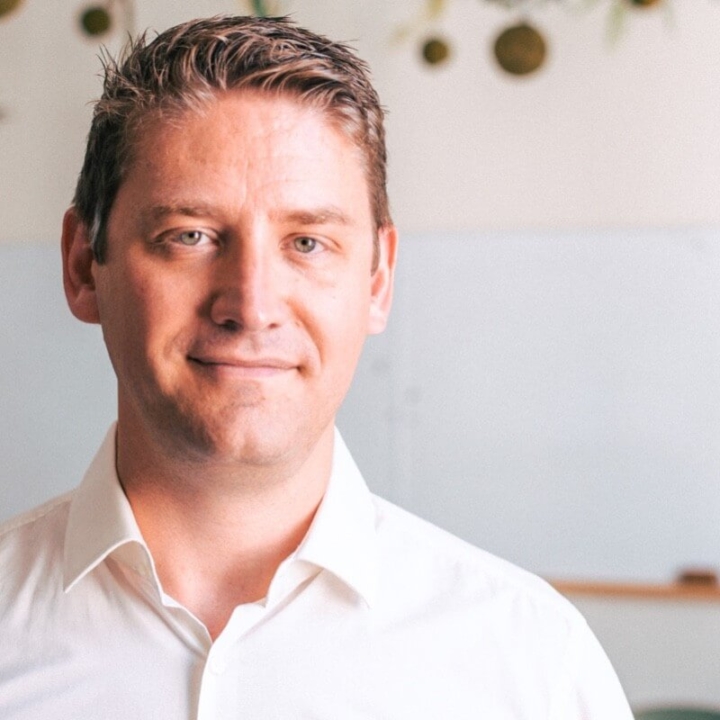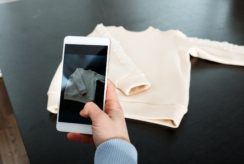The Coronavirus crisis has led to the emergence of new behaviors from consumers which are radically different from trends we are used to. We are facing a behavioral blank page, and all previous knowledge about consumers is to be questioned.
Furthermore, these behaviors are likely to change according to the evolution of the crisis and the context of each country. Acquiring the right methods and tools is essential in order to understand these behaviors, follow these changes and control these uncertainties.
The innovation methods which have been democratized over the last 10 years (Lean Start Up, design thinking, etc.) do not suffice the in-depth and necessary analyses of populations. Faced with this observation, a possible answer appears in the form of anthropology: an engine of reasoning and action to transform and innovate. Placing people back in the center, this science enables us to offer innovations that answer perfectly to the market based on behavioral analyses.
During the 9th edition of the Wavestone Innovation Club – a periodic event aimed at deciphering innovation trends – we sought to know more about the possible applications of anthropology within companies.
What does the term anthropology encompass, and how can we learn from these unusual methods and apply them to companies, especially in times of crisis?
Why is anthropology essential to innovate during a crisis?
Historically associated with the study of exotic lands and peoples, anthropology now extends to contemporary issues: social life in cities, fashion and trends, groups and companies. It allows us to get as close as possible to reality, to observe and understand practices and behaviors thanks to the richness of collected data.
In this regard, exploiting methods based on anthropology allows us to better understand social interactions, explicit the underlying reasons behind behaviors and anticipate future trends.
Every organization and every project faces complex issues related to human behavior:
- Internal challenges to the organization that affect the ability of teams collaborate. These difficulties in working together can slow down the success of a project and, in some cases, jeopardize the organization.
- External challenges to adequately address a customer segment in order to sell a product or service.
Innovation aims to find effective solutions to these problems (both internal and external). However, the primary cause of failure of a product or service is the mismatch between the solution that is offered and the expectations of the end users. Therefore, the anthropological approach is decisive since it allows us to collect the real needs of the stakeholders in order to propose fitting recommendations.
By not ignoring the complexity of a given situation, the anthropological approach makes it possible to set up a tactical procedure to target valuable components in order to study them. This procedure relies the deconstruction of observed situation to create connections and associations. The goal is not to understand everything but rather to adopt a systemic view of the problem.
As part of a study, this anthropological approach allows:
- Clarifying the requirement by highlighting the cognitive biases of the study’s prescriber
- Understanding the routines and automatisms of the subjects to better understand the ins and outs of the studied problem
- Take stock of changes in behavior linked to a crisis
- Make these new issues emerge – from the design phases – through in situ observations. Every change is an effort.
Anthropology in use: example by Olivier Wathelet
The use of such methods by several CAC40 companies is a solid testimony to the relevance of this approach.
During Club Inno, the anthropologist Olivier Wathelet related two professional experiences from his time in the innovation teams of a corporate group specializing in small appliance. These experiences highlight different drawbacks and benefits of project management by an anthropologist.
The examples below illustrate the contribution of an accelerated immersion approach to redefine the purpose of a practice from the point of view of potential users, as well as helping to realize a current project’s value and avoid failure before it goes to market.
The challenge was to design a ravioli-making machine for the Chinese market. Two teams, one French and the other Chinese worked together on the project in “pop-up studio” mode: 10 days of work punctuated by daily factory floor trips. At the end of each day, the mixed project team had to share its observations with colleagues in France and China who had remained in the factories. Everyone could then express their points of view and respond to micro-challenges resulting from field observations.
These observations allow us to identify a hidden need of Chinese users. The initial concept of the machine was to automate the entire ravioli-making process, but observation demonstrated a strong cultural habit: each family pays special attention to the aesthetics of ravioli that depends on their regional cultural affiliations, which are very important in China. This aesthetic dimension appears during the ravioli shaping phase. It was therefore advisable to leave the machine out of this precise moment, to help the user to promote their own know-how and culture.
Following this observation, the design of the machine was reworked. The “pop studio” project mode allowing to combine observation and modeling, we were able to quickly test this idea, validate it, and converge on a product design which was then successfully marketed.
As this example shows, the anthropologist’s approach goes beyond a simple needs analysis: it consists in transforming the vision of a team by helping it to immerse itself and to challenge its own convictions.
In this design project for an electric BBQ, the target was set on the American market. We intervened once the first functional models had been designed. The characteristics of the product theoretically met the expressed needs of American users, particularly the ability to cook meat according to the sensory expectations of the market, as demonstrated by lab tests.
Given the novelty of the product, we were able to set up in situ tests in New York City. This turned out to be a failure. The enforcement of local fire safety regulations meant New Yorkers had to use the BBQ on their building’s rooftop. However, the cooks’ very characteristic way of handling meat on the grill – moving it often – meant frequently opening the BBQ, prevented proper cooking of the meat because of the windy nature of the rooftops.
The in-situ test was able to highlight the problems generated by the solution which outweigh the benefits of said solution. These observations helped to reorient the group’s entry strategy for the American market.
This example clearly shows that what may be obvious in the laboratory becomes complicated, if at all possible, in “real life”. The role of the anthropologist therefore consists in setting up procedures capable of identifying these points of critical friction, by combining the conclusions’ agility and robustness.
- Participating in the definition of a strategic vision by identifying the impact of a social disruption due to a crisis
- Contributing to the propagation of a new mindset
- Training employees to take better account of users and their experiences
Anthropologists have been testing and inventing tools for nearly 3 decades. This explains why this field of study is increasingly used for innovation.
In a context of crisis and social distancing, anthropology relies on several digital tools to continue to explore, even remotely, users around the world. Netnographies, log books, live streams and remote interviews are all tools that allow us to continue to empathise despite the challenges of physical proximity.
Olivier Wathelet
Anthropologist and Fonder of the Users Matter agency
As an anthropologist, I was trained in the “classic” tools of that science which I implemented in a thesis work on “olfactory cultures” and the way our senses are shaped by our family environment. This research allowed me to discuss with several industrial players interested in the sensoriality of their customers (agri-food, gastronomy, cosmetics, automobile, etc) but whose tools sometimes had difficulty accounting for the lived experience of their customers.
These aspects are nevertheless decisive in choosing to use products and services, or even in the reaction to public policies. From that moment forward, my career focused on supporting companies to understand their current and potential users, and to involve them in innovation initiatives, which I do today for clients from very different backgrounds. (from banking to cars, including consumer goods, digital technology and even construction).
How to ensure the successful application of anthropology in a company?
A certain number of good practices ensure the success of an anthropological approach applied to companies:
Anthropology aims to analyze a context, a situation and actors in order to put the spotlight on the origin of their problems and thus ask the right questions. This is cropping.
To do this, we question the needs expressed initially to identify the underlying motivations.
Example: While commuting, the majority of passengers “dream of faster transport”. A deeper study reveals stronger underlying motivations. For example, the discomfort associated with travel is often to blame for the need to travel faster. Others want to make the most of their time, and it is the inability to work in transport that leads to this frustration.
The anthropological approach might rely on interviews with a panel of users, but it is essential to supplement them with in situ observations. Indeed, while an interview allows a great deal of information to be gathered on user perceptions, in situ observations provide complementary field data.
Observations often differ from testimonies.
These differences can be explained in several ways: users who have not taken sufficient perspective on their practices; some who, out of empathy, mitigate their negative opinions to be more conciliatory; others distort their testimonies for hierarchical or political reasons…
In situ observations are therefore a powerful tool which brings a complementary angle of study to the interviews.
Some explanations are rooted in what the user does before or after using the product.
Example: Take the example of a fleet manager who wants to anticipate the behavior of tourists at the end of a health crisis. We can therefore ask the following questions: Why will the user favor the plane over other modes of transport? What state of mind is he in when he goes to the airport? When leaving the airport, what is he trying to do and where does he want to go? … All the answers to these questions will anchor the user in an end-to-end journey in which the object of the study is only a link which depends on the other links in the chain.
The diagnostic phase prior to design and production is often neglected, as it is difficult to appraise.
In a consultancy approach, it is common to rely on presuppositions that orient data collection. Although this hypothetico-deductive model makes it possible to shorten the observation phase, it presents risks of misunderstandings and misinterpretations. Indeed, such reasoning by analogy inhibits the identification of new uses.
Two lessons emerge from this:
- It is preferable to favor an induced approach which allows field-tested answers to come forth. Data is collected with an objective look and little to no confirmation bias.
- As this upstream phase is crucial to offer relevant solutions, it is necessary to take enough time to undertake it.
Though anecdotal minorities are not the target, studying these populations enables a different approach on the possible uses of a product. For example, the study of the homeless who pass through a station could shed a new light on the use of spaces.
This new light allows for a new way of seeing ordinary cases, and to draw unexpected improvements from them.
Involving the members of the company through a lived experience to anchor practices. In order to involve the different hierarchical levels of the company, the anthropologist must share his progress by explaining the reasons for his choices and actions. Also, the top management can bet embarked through a short immersion. All this makes it possible to demystify the anthropological process and make it intelligible and concrete.
Within companies, innovation is increasingly driven by the “Design Thinking” methodology. The limits to this method – which seeks to reduce the Time to Market as much as possible – show sometimes, when hypotheses are validated too quickly. To avoid this pitfall, anthropology can be included at each step of a “Design Thinking” process.
The anthropologist's positioning, an instrumental element
When an individual is convinced of a belief, they will tend to unconsciously focus on the elements that confirm this belief and ignore anything that refutes it.
Human beings reason by analogy: if a new situation shares similarities with a known one, they tend to deduce the same outcome.
We are all subject to confirmation bias but becoming aware of our biases helps limit their effect and promotes our questioning of said biases. Thus, the observer uses his experience to decipher complex contexts without assuming answers.
Here are two tips to limit confirmation bias:
- Being comfortable with doubt by accepting our shortcomings
- Actively seeking evidence that can invalidate one’s own beliefs: for example, by being able to explain opposing arguments better than opponents themselves
The anthropological study is qualitative and is based on observations from a sample.
The objective of such a study is not exhaustiveness, but rather obtaining the range of potential uses.
Most of the time, a small panel of observed users is enough, as long as it is sufficiently varied.
When wishing to understand and explain a situation, it is important to be aware of your own subjectivity and of the Dunning Kruger effect or “overconfidence” effect: a cognitive bias according to which those less qualified in a field overestimate their skills.
In order not to remain blinded by prejudices, the observer must assume that the observed subjects have a logical and thoughtful reason for each of their actions.
From the observed subject’s perspective, their behavior and actions are motivated by logical reasoning built from experience.
By prejudging the intelligence of others, the observer adopts an open mind which allows for a more accurate analysis.
Conclusion
Anthropology is a study that is constantly reinventing itself and represents a powerful tool of understanding to sketch out the future on the behavioral blank page created by the Coronavirus crisis.
History has shown us how a crisis can remove certain societal roadblocks, allowing for the most significant innovations to emerge. These innovations rely on technology but take root in the advent of new behaviors. Today, although the situation is deeply upsetting, this crisis is also an opportunity to reinvent ourselves. It therefore seems essential to arm oneself with the necessary tools to better understand human beings.
To quote Ghislaine Gallenga, researcher and anthropologist at the innovation club: “anthropology is the study specializing in culture and meaning”, this shows how important its role is today!
These methods – once considered to be only accessible to experts in their field – can now be adopted by companies. This is what we have done by integrating anthropology into our know-how through an open mind and a positioning positively human-oriented.
With the current crisis, anthropology deserves its place in an innovative company now more than ever!






